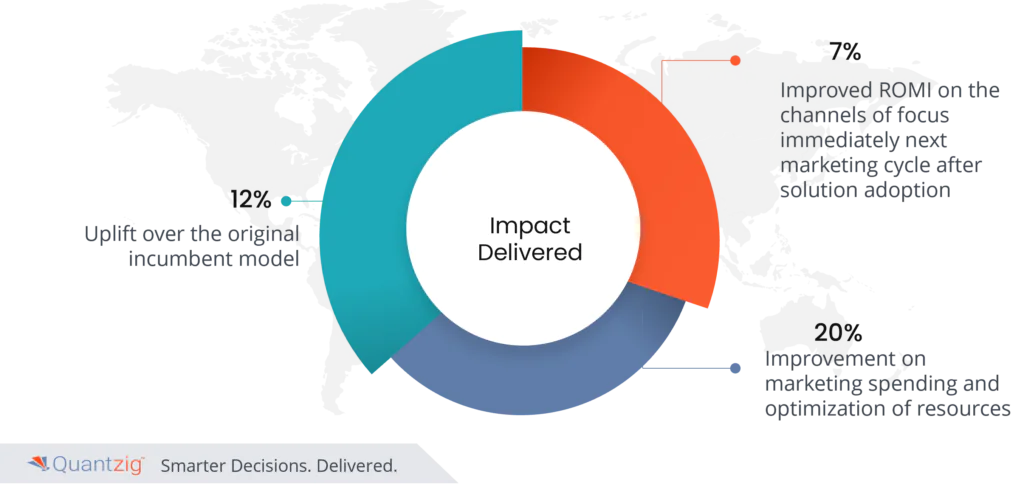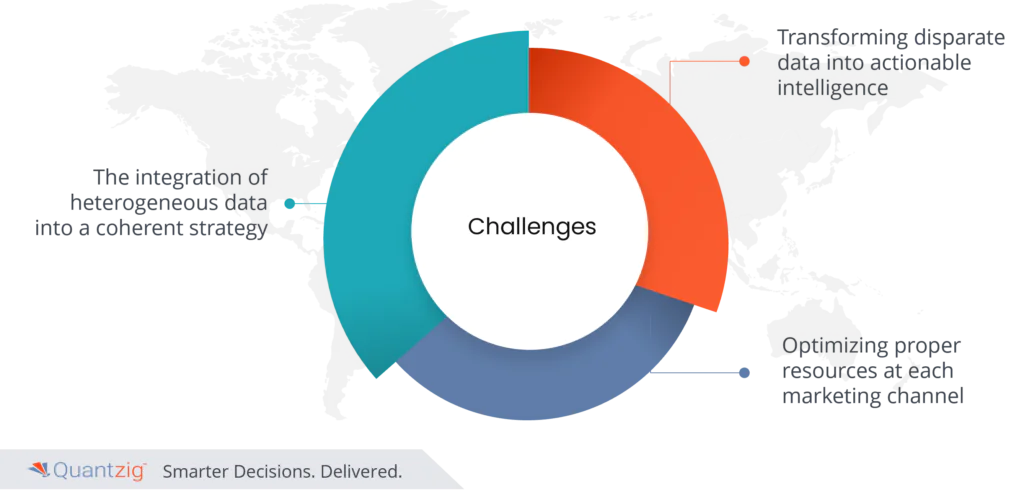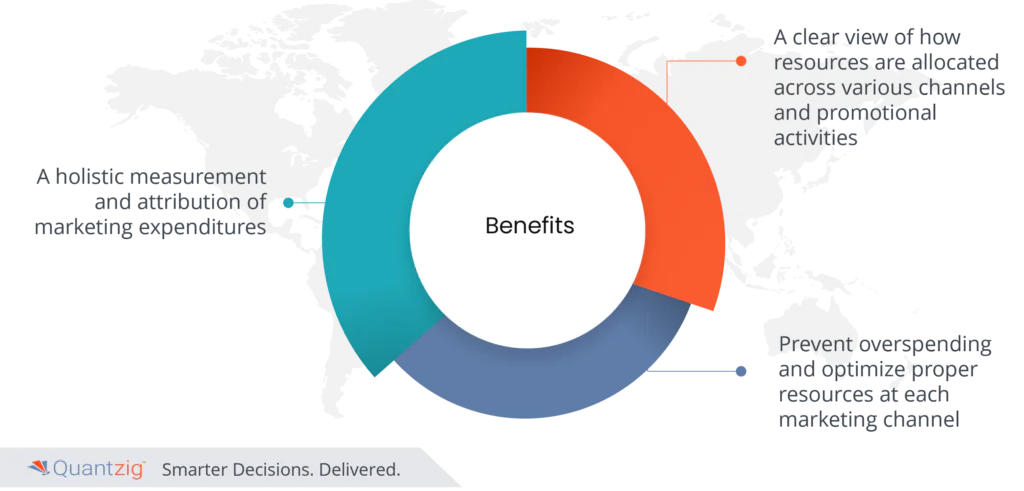Introduction to Marketing Analytics
In sports marketing, the importance of accurate marketing data cannot be overstated. The return on investment (ROI) is intricately tied to brand awareness and conversions, necessitating the utilization of advanced models such as Media Mix Models (MMM), Multi-Touch Attribution (MTA), and Unified Marketing Measurement (UMM).
Leveraging branded media, branding strategy, and targeted personal ads, organizations can establish demographic associations and stay attuned to customer trends and preferences. This data-driven approach extends to service or product development trends, customer support, and messaging strategies, enabling marketers to effectively navigate competition, stand out from competitors, and predict future results.
From unraveling the consumer behavior to deciphering the nuances of campaign performance, this article delves into the heart of analytical tools, offering invaluable insights, essential tools, and compelling reasons why it stands as the fundamental of modern business success.
Book a demo to experience the meaningful insights we derive from data through our analytical tools and platform capabilities. Schedule a demo today!
Request a Free DemoHow Quantzig applied Marketing Analytics to drive success?
| Client Details | A CPG multinational based in the USA with centralized budgeting and decentralized execution in digital and non-digital channels. |
| Challenges | Outdated once-a-year planning model that didn’t adapt to real-time changes in digital marketing. Inability to leverage internal performance data for effective decision-making, resulting in missed opportunities and suboptimal ROI. |
| Solutions Offered | Combined Marketing Mix Modeling (MMM) and Multi-Touch Attribution (MTA) for adaptive planning with weekly data updates. Enhanced decision-making for dynamic marketing strategies and improved market performance and ROI. Built intelligence layers, attribution models, and simulation tool kits for efficient budgeting and channel allocation. |
| Impact Delivered | The new MMM model resulted in a 12% improvement over the original model. 7% increase in Return on Marketing Investment (ROMI) in the next marketing cycle. 20% improvement in market spending and resource optimization. |
Client Details
The client is a CPG Multinational located in the USA with centralized budgeting and decentralized execution for digital and non-digital channels.
The Challenge faced by the Client
The client faced several critical challenges with their traditional Marketing Mix Modeling (MMM) approach. First and foremost, their once-a-year planning model was outdated in today’s rapidly evolving marketing landscape, where real-time adjustments are essential. The inability to adapt dynamically to digital channels, which often require immediate responses, hindered their competitiveness. Furthermore, the MMM approach did not effectively leverage the client’s internal performance data. This limitation prevented the integration of crucial insights into the decision-making process, resulting in missed opportunities for optimizing market strategies, allocating resources, and ultimately achieving maximum return on investment.
Marketing Analytics Solutions offered by Quantzig
Quantzig’s innovative solution combined Marketing Mix Modeling (MMM) and Multi-Touch Attribution (MTA), addressing the client’s challenges effectively. By refreshing the model with weekly data updates, the approach became more adaptive, enabling dynamic planning that considered recency effects throughout the year, rather than being confined to an annual cycle. This data-driven synergy empowered the client to make real-time, informed marketing decisions, optimizing market strategies for maximum impact and efficiency. The integration of MMM and MTA modernized their approach and enhanced their ability to seize opportunities and respond to market dynamics promptly, resulting in improved market performance and ROI.
We began building the intelligence layer followed by attribution models for channels that did not have a direct way of recognizing share of revenue. We followed it with the calculation of baseline revenue and a breakdown of overall revenue for channel-wise spread. We then identified the sensitivities, and efficient boundaries for channel spending with ROI Measurements and enabled a simulation tool kit for market analysts to explore different budgeting scenarios and channel allocation.
Impact Delivered after Quantzig’s Solutions

- The newly built MMM had an uplift of 12% over the original incumbent model.
- The client was able to improve ROMI on the channels of focus immediately next marketing cycle after solution adoption by 7%.
- 20% improvement on market spending and optimization of resources.
Experience the advantages firsthand by testing a customized complimentary pilot designed to address your specific requirements. Pilot studies are non-committal in nature.
Request a Free PilotMarketing Analytics: A Deep Dive into the Importance
To navigate this complexity, an integrated marketing framework emerges as a powerful solution. Such a framework enables CMOs to strategically allocate budgets across the myriad of available channels, ensuring that resources are used most efficiently. Simultaneously, it equips them to respond nimbly to market risks and opportunities as they arise, thus enabling tactical agility.
In essence, this approach to marketing management fosters a harmonious synergy between long-term marketing strategy and real-time responsiveness, ultimately enhancing a brand’s ability to adapt and thrive in an ever-evolving marketplace.
What is Marketing Analytics used for?
Marketing analytics software plays a pivotal role in navigating the complexities of the modern marketing landscape. It encompasses a range of advanced tools and techniques tailored to enhance marketing activities and inform strategic marketing decisions. From advanced analytics models such as Media Mix Models (MMM) and Multi-Touch Attribution (MTA) to the holistic Unified Marketing Measurement (UMM) approach, these tools provide invaluable insights into campaign performance and effectiveness.
Marketing analytics software empowers businesses with real-time analytics and insights, enabling agile adaptation and optimization of strategies. Leveraging Artificial Intelligence, machine learning techniques and predictive modeling, this software anticipates market trends and optimizes resource allocation for maximum impact. From web and social media analytics to in-depth statistical analysis, marketing analytics software drives data-driven decision-making, ensuring marketing campaigns are finely tuned to resonate with target audiences and drive tangible business outcomes.
Marketing Analytics Software – Features & Capabilities
When it comes to the features that leads to the inclusion of Marketing Analytics in a sector, there are a few distinct mentions needed.
- Advanced Analytics Models: Leading marketing analytics software offers a diverse array of analytics models including Media Mix Models (MMM), Multi-Touch Attribution (MTA), and Unified Marketing Measurement (UMM). These models provide comprehensive insights into the efficacy of marketing activities across channels, enabling businesses to optimize resource allocation and maximize ROI in the ever-evolving modern marketing landscape.
- Real-Time Analytics and Insights: With a focus on agility and responsiveness, top-tier marketing analytics software delivers real-time analytics and insights. This capability empowers marketers to make data-driven decisions swiftly, adapting strategies on the fly to capitalize on emerging trends and consumer behavior shifts, ensuring campaigns are finely tuned to resonate with target audiences.
- Robust Brand Measurement: Marketing analytics software equips businesses with brand measurement capabilities, allowing for a thorough assessment of brand performance and perception. From tracking brand sentiment to analyzing brand equity, this feature enables marketers to gauge the effectiveness of their efforts and refine strategies to enhance brand visibility and resonance in the market.
- Predictive Modeling and Machine Learning: Leveraging cutting-edge Artificial Intelligence and machine learning techniques and predictive modeling, marketing analytics software forecasts future trends and consumer behavior patterns. By analyzing historical data and identifying predictive indicators, businesses can anticipate market shifts, optimize marketing campaigns, and stay ahead of the competition in an increasingly competitive landscape.
What are the Key components of marketing analytics strategy?

The key components of a marketing analytics strategy includes leveraging consumer data to inform decisions made by marketing professionals regarding allocation of marketing resources across various marketing channels. Understanding consumer demographics and gaining valuable consumer insights are crucial for aligning strategies with overarching marketing objectives such as enhancing brand awareness. Furthermore, the use of analytics facilitates the creation and deployment of personalized ads, ensuring targeted communication with consumers.
Leveraging predictive modeling, artificial intelligence, and machine learning empowers marketing professionals to make informed marketing decisions, this strategy involves analyzing various marketing activities and allocating marketing resources effectively across diverse marketing channels. Understanding consumer behavior and consumer demographics including regional preferences and creative preferences is crucial for aligning strategies with overarching marketing goals. By implementing data-driven approaches, businesses optimize their marketing programs and drive revenue growth while adapting to changing marketing behavior in the competitive landscape.
Analysing Marketing Analytics Tips with Data
Marketing analytics data is sourced from a variety of channels and processes. It encompasses data gathered from marketing data analysis, including single attribution analysis, multi-touch attribution analysis, and media mix modeling. Additionally, unified marketing measurement methods consolidate data from various sources. Ensuring data accuracy and quality involves data hygiene procedures, which include database hygiene services. Predictive analytics enable businesses to predict customer churn and assess lifetime value. Marketing data is derived from various marketing tools and marketing software, including those used for email marketing and digital marketing. Real-person expertise ensures accurate analysis and customizable reports in database marketing services.
Marketing analytics data is sourced from a multitude of channels and processes, reflecting the complexity of the modern marketing landscape. It encompasses consumer insights derived from various sources such as sales funnel interactions, customer trends, and customer support interactions. Additionally, marketing objectives guide the collection of data, focusing on metrics like return on investment, brand awareness, and future results. Data is gathered from diverse sources including marketing data, media mix models, and product intelligence. Advanced analytics tools and software enable real-time analysis, granular data examination, and the creation of marketing campaign strategies informed by attribution models and correlating data.
What challenges Quantzig overcomes using Marketing Analytics?

The integration of this vast data into a coherent strategy is a formidable challenge. This is where advanced analytical services, Artificial Intelligence, and machine learning solutions come into play as essential market analytical tools. These tools possess the ability to systematically identify and attribute meaningful insights within this wealth of diverse data. These technologies programmatically sift through the information, recognizing patterns, trends, and correlations that might be otherwise invisible. This, in turn, enables businesses to make informed decisions and allocate resources judiciously.
Big data requires the expertise of data scientists to correlate and interpret information. Attribution models and analytical software, with their advanced features and capabilities, offer real-time insights, granular person-level data, and contextualized customer and market insights. These tools guide annual media plan recommendations, ensuring a comprehensive and informed marketing mix that resonates with sports enthusiasts worldwide.
Furthermore, the solutions from Quantzig for these challenges can help with tailored investment plans for each channel. By leveraging these insights, marketing efforts can be optimized to ensure the right resources are allocated to each channel, based on its unique performance and potential. As a result, transforming disparate data into actionable intelligence, facilitating more effective and efficient advertising campaigns, and ultimately driving business success.
Benefits of implementing Marketing Analytics Tips by Quantzig

Implementing analytics in marketing offers numerous benefits for businesses. Analysis of consumer demographics enables the creation of targeted campaigns, leading to improved brand awareness and higher engagement levels. Overall, integrating marketing data analytics into strategies enables businesses to achieve their marketing objectives more efficiently while gaining valuable consumer insights for future initiatives.
Quantzig’s Unified Marketing Decision Management (MDM) framework is a comprehensive approach to advertising optimization that starts with a holistic measurement and attribution of marketing expenditures. These strategic methods are designed to assist businesses in making data-driven decisions, enhancing their advertising efforts, and maximizing return on investment.
The first step involves measuring and attributing market spending, offering a clear view of how resources are allocated across various channels and promotional activities. By identifying the expected revenue without any promotional efforts, companies gain a baseline for assessing the true impact of their marketing strategies. MDM then enables businesses to determine the effectiveness of different promotions in specific scenarios, providing valuable insights into which strategies yield the best results.
One of the key strengths of Quantzig’s MDM framework is its ability to quantify the impact of advertising activities, not only for a single brand but across multiple brands within an organization. It also allows for the simulation of media plans, providing a virtual environment for measuring the potential returns of different strategies. This data-driven approach ultimately culminates in the optimization of marketing initiatives, ensuring that businesses can fine-tune their strategies for maximum impact and profitability. Our MDM framework offers a powerful analytical tool for businesses seeking to enhance their decision-making and drive success.
How to implement the Marketing Analytics tips?
From understanding consumer behavior to optimizing marketing campaigns, marketing analytics serves as a cornerstone for informed decision-making and strategic planning. By delving into key processes and methodologies, businesses can unlock valuable insights, enhance brand performance, and drive tangible business outcomes.
Understanding consumer demographics and deriving valuable consumer insights are crucial for aligning strategies with overarching marketing objectives, particularly in enhancing brand awareness. Moreover, the implementation of analytics enables the creation and deployment of personalized ads, ensuring targeted communication with consumers. By comprehensively analyzing marketing data, businesses refine their strategies, optimize performance, and achieve their marketing goals effectively.
- Define Marketing Objectives and Key Metrics: Begin by clearly defining marketing activities and objectives aligned with business goals. Identify key performance indicators (KPIs) such as brand measurement capabilities, product intelligence, and campaign ROI. This lays the foundation for selecting appropriate analytics models and techniques, such as Media Mix Models (MMM) or Multi-Touch Attribution (MTA), tailored to measure success in the modern marketing landscape.
- Gather and Integrate Data: Collect relevant data from various sources including web analytics, social media analytics, and product development trends. Utilize marketing analytics software to consolidate data streams and ensure accuracy. Implement real-time analytics capabilities to capture immediate insights and respond swiftly to market dynamics, enhancing predictive modeling accuracy.
- Analyze and Interpret Data: Apply statistical analysis and machine learning techniques to uncover patterns and correlations within the data. Conduct predictive modeling to forecast future trends and consumer behavior. Leverage product intelligence and consumer insights to inform strategic decision-making and adapt marketing campaigns accordingly in the modern marketing landscape.
- Iterate and Optimize: Continuously monitor and evaluate marketing performance using Unified Marketing Measurement (UMM) frameworks. Refine strategies based on real-time analytics and insights, adjusting marketing activities to maximize ROI. Embrace multi-touch attribution methodologies to attribute success accurately across channels, ensuring resources are allocated effectively in the pursuit of business objectives. Through iterative refinement and optimization, the marketing analytics process evolves to drive sustained success in the dynamic business environment.
Embarking on the marketing analytics journey is essential for businesses aiming to thrive in today’s competitive marketplace. Marketing analytics software empowers businesses to make data-driven decisions, adapt strategies in real-time, and stay ahead of evolving market trends. As organizations continue to navigate the complexities of the modern marketing landscape, investing in marketing analytics capabilities will be instrumental in unlocking growth opportunities and achieving long-term success.
Get started with your complimentary trial today and delve into our platform without any obligations. Explore our wide range of customized, consumption driven analytical solutions services built across the analytical maturity levels.
Start your Free TrialConclusion
In a world where data reigns supreme, analytical tools for marketing stands as the North Star guiding businesses toward success. This article has illuminated the vital role it plays, offering essential tips and tools for harnessing its power. Understanding consumer behavior, deciphering campaign performance, and optimizing strategies have never been more critical. As the digital and physical Adverising landscape continues to evolve, those who harness the insights of market analytical services will thrive. It is not merely a choice but a necessity for those who seek to excel in the relentless pursuit of market dominance. Embrace these insights, empower your decisions, and watch your brand rise to new heights in the era of data-driven marketing.



